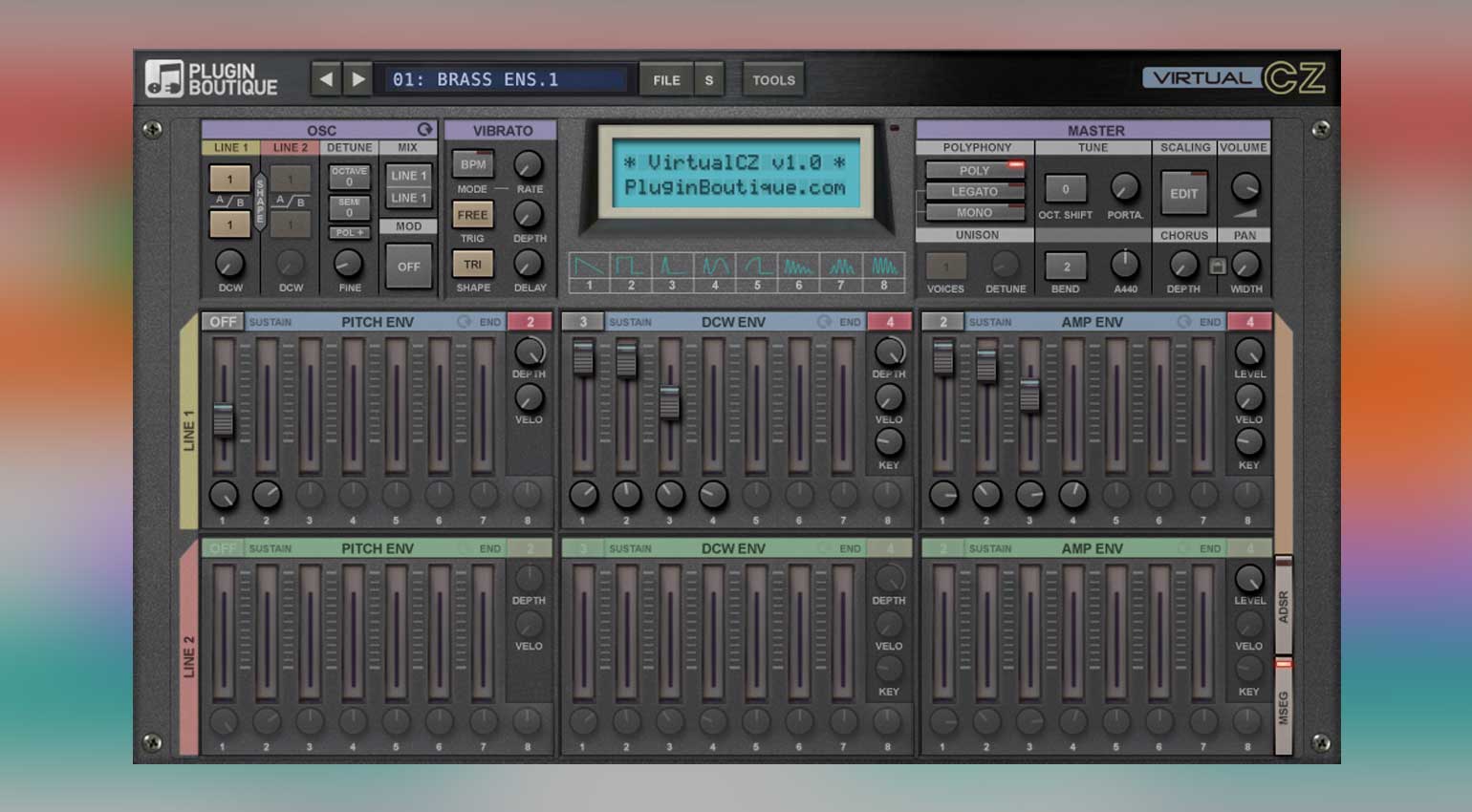
Just a single LFO was provided, and this was hard-wired to generate vibrato. Unfortunately, CZs were not well endowed in the (conventional) modulation department. There’s also the noise- and ring-modulation of the original synths, the latter of which was one of their defining features. This is equivalent to a filter’s initial cutoff frequency and, although this didn’t exist as a parameter in the CZs, it should have done! Like the originals, you can select four options for the Lines (1, 2, 1+1 and 1+2) and detune them if either of the dual modes is selected.
#Virtual cz vst plus
But beware, seasoned CZ programmers will tell you that ADSRs are for wimps.ĪDSRs are for wimps.In the oscillator section, you’ll find the controls for selecting the two waveforms modified by each Line, plus a new knob that allows you to set the base value for the waveshapes’ modulation amount. The second is a conventional ADSR mode for those who prefer to work within the limits of traditional four-stage contours. The first is looping, which loops all of the stages up to and including the sustain, which you can define as any stage from 1 to 7. Virtual CZ’s contours also offer two further facilities not found on the original synths. This is correct higher notes on acoustic instruments are generally brighter and faster than lower ones. All three are velocity sensitive and, in addition, Key Follow can influence the depth of the waveshape modulation as well as the rate of the Amp contour. Like the original synths, Virtual CZ offers two ‘Lines’ (essentially, two synthesizers), each with three eight-stage contour generators. So, whereas analogue subtractive synthesis typically uses three contour generators - oscillator pitch, filter cutoff frequency, and amplifier gain - to shape its notes, PD offers three that control the oscillator pitch, the DCW (digitally controlled waveshaper), and the amplifier gain. Reducing the amount of modulation applied to the analogue-style waveforms is therefore similar to closing a low-pass filter, while doing so with the ‘resonant’ waveforms imitates a band-pass filter. The waveforms you see are generated when the phase modulation (think of this as waveshaping) is at its maximum the harmonic content diminishes as you reduce the modulation until, at its minimum, you obtain something very simple, generally a sine wave.

You can’t morph between these as you would on a wavetable synth instead you choose two (on the original, you couldn’t combine 6, 7 or 8 with one another, these were ‘illegal’ combinations), whereupon each will be played alternately, with a resulting drop in pitch of one octave where appropriate.

The eight images under the representation of the LCD depict the waveforms available, starting with a sawtooth on the left and ending with a resonant/sync-y something-or-other on the right.
#Virtual cz vst full
There’s no room to explain PD synthesis in full here, but a brief recap should explain the Virtual CZ GUI. Casio sold them by the truckload and, even today, the CZs have their aficionados, so it’s surprising that there has been no serious attempt to recreate them as a soft synth.

Inevitably, their Phase Distortion synthesis (PD) was compared with Yamaha’s Frequency Modulation (FM), but the underlying mathematics of the two systems was rather different, and the Casios had an idiosyncratic character that lay somewhere between Yamaha’s DX-series and the DCO-based analogue synths of the era, making them perfect for musicians who were moving away from the expensive polysynths of previous years and experimenting with lower-cost instruments and new musical forms. With the exception of the analogue choruses on later models, they were wholly digital instruments with almost incomprehensible sound generators and equally impenetrable control surfaces, but they were cheap, and that counted for a lot. Despite enormous popularity in the 1980s, Casio’s CZ range has never been made into a soft synth, until now.įew now remember that Casio’s CZ-series keyboards were some of the most popular synths of the 1980s.


 0 kommentar(er)
0 kommentar(er)
